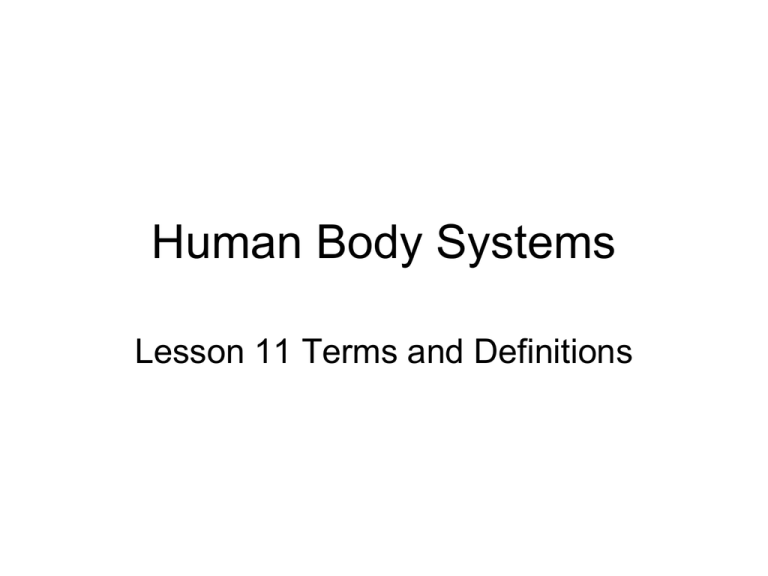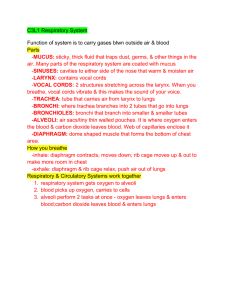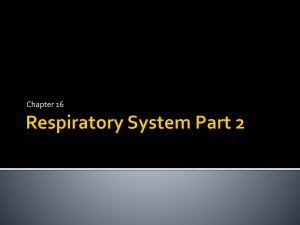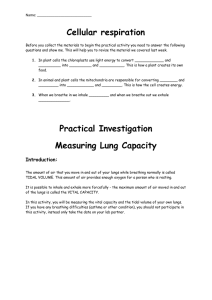HBS Lesson 11 - terms and def
advertisement

Human Body Systems Lesson 11 Terms and Definitions Characteristics of the lungs • Elastic – they can expand and contract • Inside is like a sponge – Contains bronchi and alveoli – Alveoli surrounded by capillaries • Diffusion of gases occur between the alveoli and the capillaries. Oxygen and Carbon Dioxide Exchange Q: How much air can you exhale? Tidal Volume • Tidal Volume – The volume of air that is moved in and out of your lungs with each breath. – Avg. adult breath – 500mL of air in and out Average Adult Male Lungs • Lungs of avg. adult male – Hold 3000 mL air – Can forcibly inhale an additional 3000 mL • Total lung capacity – 6000 mL air Vital Capacity • Vital Capacity – the amount of air that a person can forcibly exhale after breathing in as much air as possible. – Avg. adult male – 4800 mL Residual Volume • Residual Volume – the amount of air still in the lungs after you force out as much as possible. – Avg adult male – 1200 mL Total Lung Capacity • Total Lung Capacity – the sum of vital capacity and residual volume. – The total volume of air the lungs can hold. • Avg. healthy adult male 6000 mL. 4800 mL – Vital Capacity +1200 mL – Residual Volume 6000 mL – Total Lung Capacity What affects Vital Capacity? • Body size, age, strength of respiratory muscles… • Older you get – lungs are less elastic – 70 yr old persons 2/3 the vital capacity of a healthy young adult Respiratory Rate • The amount of time it takes to breath in and out. – Often determined by respirations per minute • Active person – higher respiratory rate • Inactive person – lower respiratory rate Macrophages • Macrophages – Cells that clean the respiratory tract. – Destroy dust and other harmful things we inhale.







